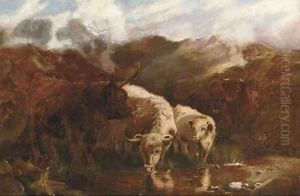Robert F. Watson Paintings
Robert F. Watson was an American artist known for his contributions to the Abstract Expressionist movement. Born in 1923, Watson grew up in a period when the United States was undergoing significant social and economic changes. His early life was marked by the Great Depression and World War II, both of which influenced the cultural landscape of the nation and, consequently, the development of art in the 20th century.
Watson's artistic journey began in the 1940s, a time when many American artists were breaking away from traditional European influences and experimenting with new styles and techniques. This period saw the rise of Abstract Expressionism, a movement characterized by an emphasis on spontaneous, automatic, or subconscious creation. Artists like Jackson Pollock, Willem de Kooning, and Mark Rothko were leading figures in this movement, and they had a profound impact on Watson's work.
Throughout the 1950s and 1960s, Watson developed his own unique style, which often featured abstracted landscapes and a mystical or surreal quality. His paintings were known for their dreamlike atmospheres and use of color to evoke emotional responses. Watson's work did not seek to represent reality but rather to express the inner psyche and the complexity of human emotions.
In addition to painting, Watson also taught art and was involved in the academic side of the art world. He influenced a younger generation of artists with his teachings and philosophy on art. Watson's works have been exhibited in various galleries and museums across the United States, contributing to his reputation as a significant figure in American abstract art.
Robert F. Watson passed away in 2004, but his legacy lives on through his art, which continues to be studied and appreciated for its innovative approach and contribution to the development of modern art in America. His paintings remain relevant and are included in the collections of art enthusiasts who value the exploratory spirit of the mid-20th century American art scene.
